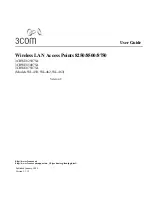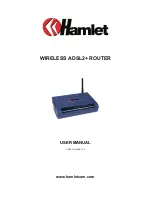
NINA-B4 series - System integration manual
UBX-19052230 - R06
Design-in
Page 25 of 45
C1-Public
•
Track impedance matched traces. Consult with your PCB manufacturer early in the project for
proper stack-up definition.
•
Separate the RF and digital sections of the board.
•
Ground splitting is not allowed under the module.
•
Minimize the bus length to reduce potential EMI issues from digital buses.
•
All traces (including low speed or DC traces) must couple with a reference plane (GND or power);
Hi-speed buses should be referenced against the ground plane. If any ground reference needs to
be changed, an adequate number of GND vias must be added in the area that the layer is switched.
This is necessary to provide a low impedance path between the two GND layers for the return
current.
•
Hi-Speed buses are not allowed to change reference plane. If changes in the reference plane are
unavoidable, capacitors must be added in the transition area of the reference planes. This is
necessary to ensure that a low impedance return path exists through the different reference
planes.
•
Following the “3w rule”, keep traces at a distance of no less than three times that of its own width
from the routing edge of the ground plane.
•
For EMC purposes and the need to shield against any potential radiation, it is advisable to add
GND stitching vias around the edge of the PCB. Traces on the PCB peripheral are not
recommended.
2.6.3
Thermal guidelines
NINA-B4 series modules have been successfully tested from –40 °C to +105 °C. NINA-B4 modules are
low-power devices that generate only a small amount of heat during operation. A good grounding
should still be observed for temperature relief during high ambient temperatures.
2.6.4
ESD guidelines
Device immunity against Electrostatic Discharge (ESD) is a requirement for Electromagnetic
Compatibility (EMC) conformance and use of the CE marking for products intended for sale in Europe.
For any product that integrates u-blox modules to bear the CE mark it must be conformance tested
in accordance with the R&TTE Directive (99/5/EC), EMC Directive (89/336/EEC), and Low Voltage
Directive (73/23/EEC) issued by the Commission of the European Community.
Compliance with the above directives also implies conformity to the following European norms for
device ESD immunity: ESD testing standard CENELEC EN 61000-4-2 [9] and radio equipment
standards ETSI EN 301 489-1 [10], ETSI EN 301 489-7, ETSI EN 301 489-24. The ESD immunity
requirements for each of these standards are summarized in Table 12.
The ESD immunity test is performed at the enclosure port, which is defined by ETSI EN 301 489-1 as
the physical boundary through which the electromagnetic field radiates. If the device implements an
integral antenna, the enclosure port is seen as all insulating and conductive surfaces housing the
device. If the device implements a removable antenna, the antenna port can be separated from the
enclosure port. The antenna port includes the antenna element and its interconnecting cable
surfaces.
The applicability of ESD immunity test to the whole device depends on the device classification as
defined by ETSI EN 301 489-1. Applicability of the ESD immunity test to the related device ports or
the related interconnecting cables to auxiliary equipment depends on device accessible interfaces
and manufacturer requirements, as defined by ETSI EN 301 489-1.
Contact discharges are performed at conductive surfaces, while air discharges are performed at
insulating surfaces. Indirect contact discharges are performed on the measurement setup horizontal
and vertical coupling planes as defined in CENELEC EN 61000-4-2.
















































